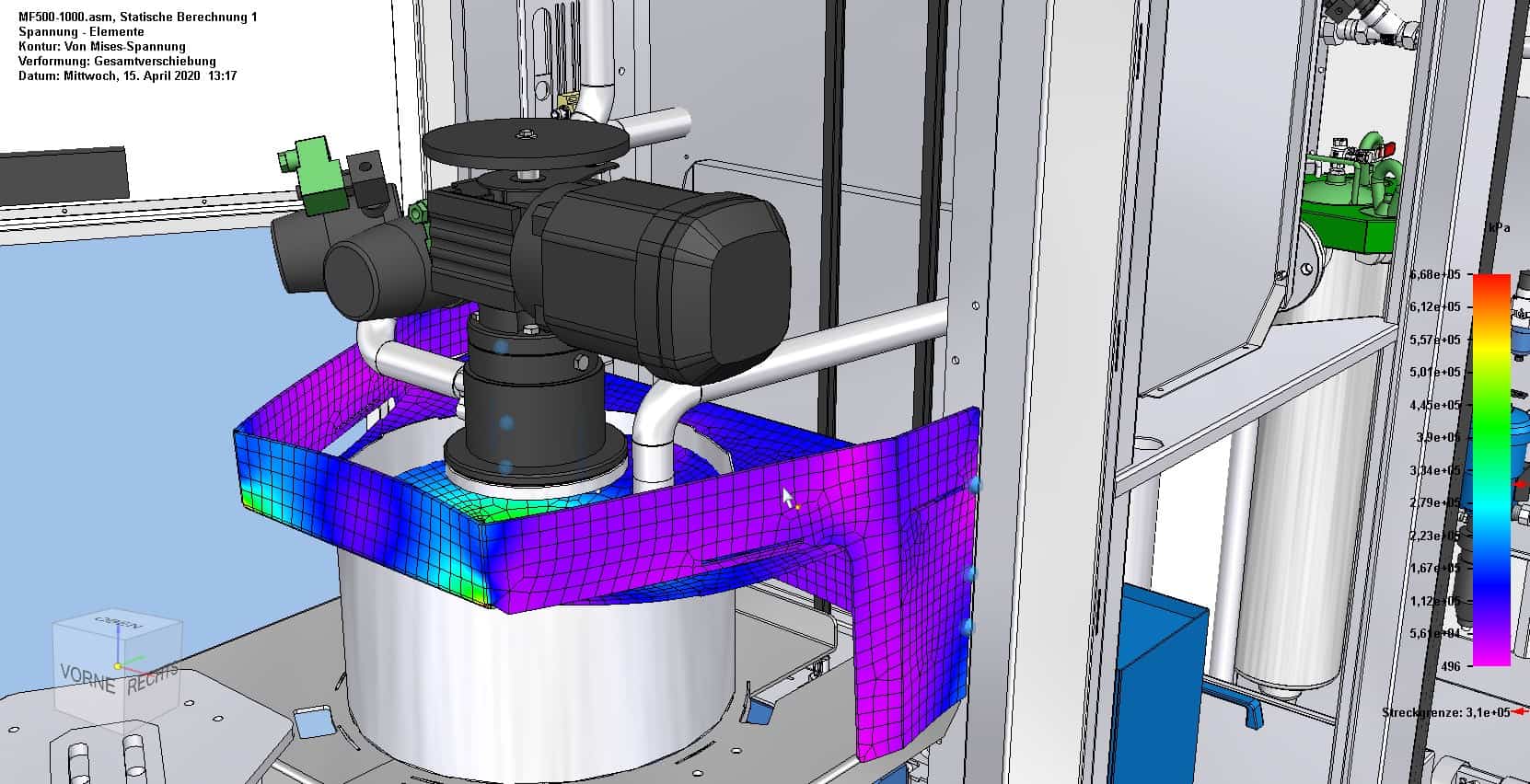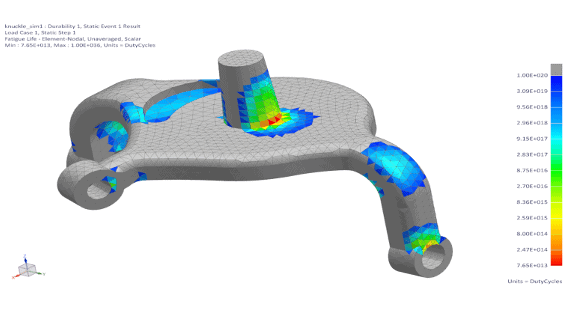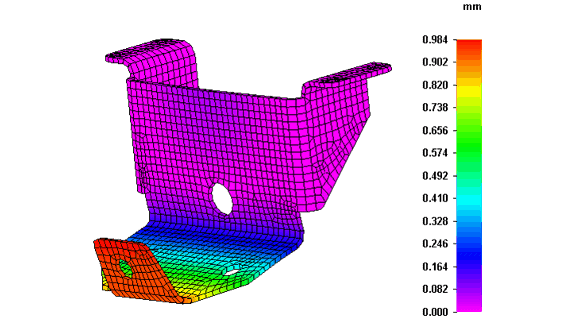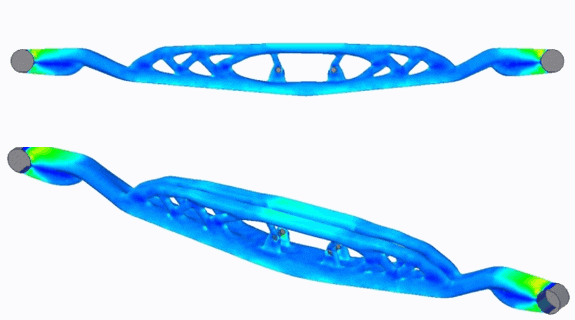Simulation CAE FEA Service
We offer CAE services at the highest level ...
… and put the uncomplicated cooperation with our customers first in order to achieve the best results! We are a highly dynamic, competent team with an academic background and many years of experience, consisting of three calculation engineers, one application engineer and one project engineer.

Finite element analyses of structures
We provide you with finite element analyses of structures (FEA) in various calculation disciplines according to your customer requirements. Gain insights into product behaviour and optimisation potential at an early stage of development. Whether simulation in classical structural mechanics, non-linear computation for estimating the coefficient of support, composite models or multi-body simulation, we have the ideal solution!
Among other things, we can point to more than 50 successfully completed CAE calculation projects, work in the VDMA simulation working group and hold a bachelor’s curriculum lecture on strength of materials and finite elements at the FH Campus Wien in Austria.

Fatigue
Fatigue can be used to estimate the lifetime of the design.
In the first step, the effects of different load cases on the structure are calculated. Subsequently, this calculation is extended with various influencing parameters, such as temperature or surface roughness.
The Austrian fatigue software we use links these influences with each other and shows weak points with regard to service life by means of colour plots

CAE Verifications
The scope of authorisation of the engineering office trade includes, besides other things, consulting, drawing up designs, analyses and studies, carrying out examinations, checks and measurements and working out projects. This enables us to create valid CAE verifications and to link the finite element method with regulations for verification.
For the most part we evaluate machine components according to the FKM Guideline 2012 with local stresses and screw connections according to VDI2230 – Sheet 2. However, we are also able to incorporate other regulations, e.g. DIN743, non-linear guideline or threaded connections locally III into your verification concept!

Topology optimisation
Topology optimisation determines the best material distribution given an optimisation objective and a set of constraints. This is done by importing a part concept and removing material from it to minimise or maximise an optimisation objective such as mass, displacement or compliance while satisfying a set of constraints such as maximum stress or displacement. This type of optimisation can lead to some very new and complex shapes that are subsequently produced using additive manufacturing. In the past, it was often impractical to produce particularly complex shapes due to the limitations of traditional manufacturing methods. However, newer processes, such as additive manufacturing, have enabled the widespread use of highly complex designs.






